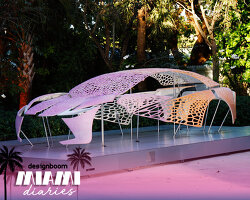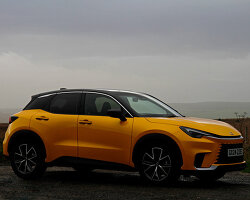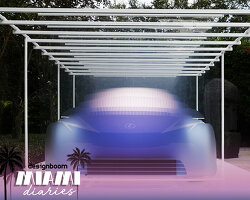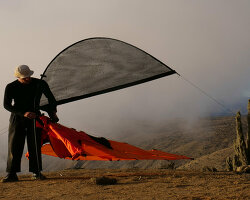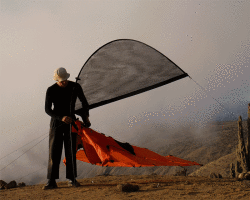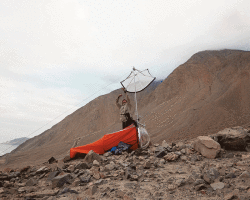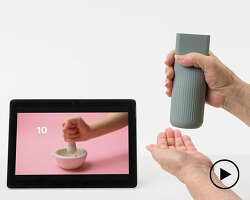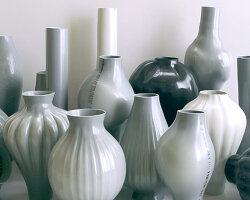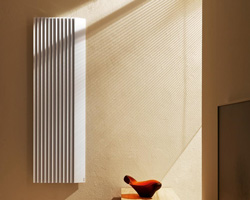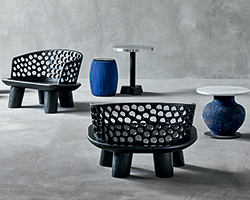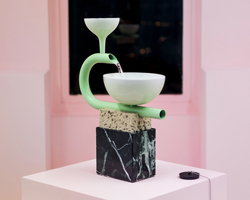LEXUS design award 2018: running for its sixth consecutive year, designboom is co-organizing the LEXUS DESIGN AWARD 2018 competition— the leading mentored awards presented every year during milan design week (see last year’s winner here.)
the LEXUS design award provides an opportunity for young innovators to showcase their works while receiving feedback from world-renowned professionals in the area of design. through this initiative, LEXUS intends to nurture and support world-enriching creators. for 2018 edition, more than 4,000 people participated via the call published on designboom which comprised the period from july 24th to october 18th, 2017. see the call for entries here.
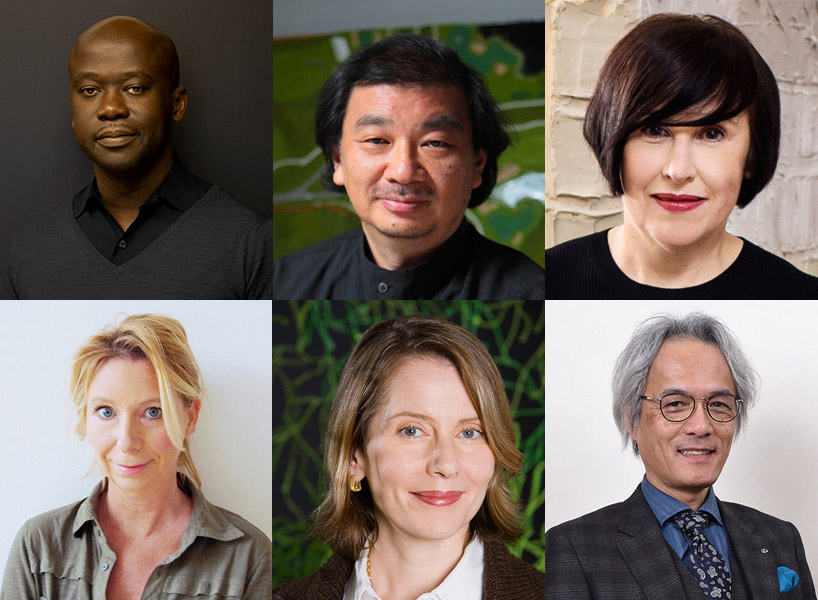
LEXUS design award 2018 jury: sir david adjaye, shigeru ban, paola antonelli, birgit lohmann, alice rawsthorn, yoshihiro sawa
after careful consideration twelve winners have been selected by the six judges: sir david adjaye, architect; paola antonelli, curator; shigeru ban, architect; birgit lohmann, designboom’s editor in chief; alice rawsthorn, design commentator; and yoshihiro sawa, executive vice president of LEXUS international. four prototype winners received a mentorship by an acknowledged professional to develop a prototype of his/her submitted work. the sponsor will cover the prototype production costs up to 3 million yen (*includes tax, customs duty, construction fee and part of a packaging fee).
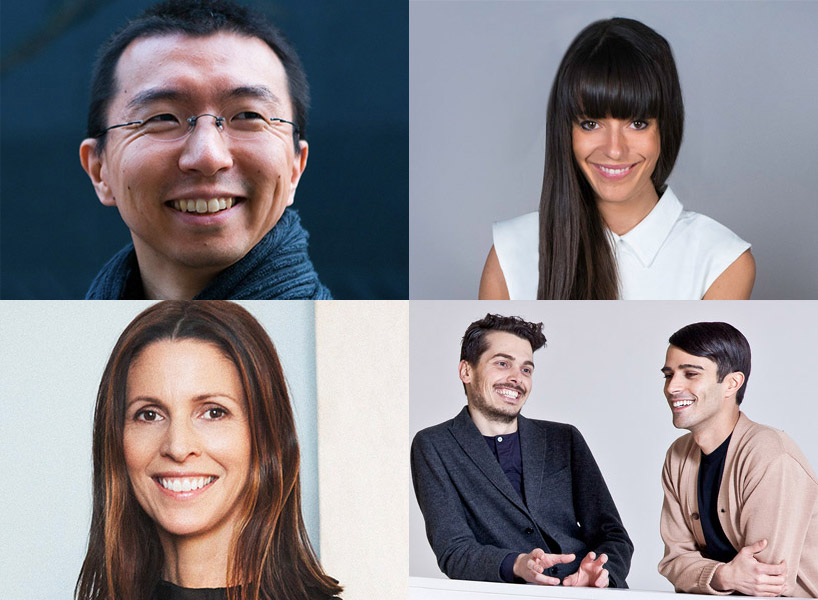
mentors: formafantasma, italian designer duo based in amsterdam; sou fujimoto, architect; lindsey adelman, designer; and jessica walsh, designer and art director.

the theme for the LEXUS design award 2018 is ‘CO-’:
‘CO-’ , a latin prefix meaning with or together in harmony. LEXUS believes that great design can ensure the harmonious coexistence of nature and society. in that sense, ‘CO-‘ is an approach that allows the brand to explore its true potential and that of the environment by creating new possibilities through collaboration, coordination and connection.


TESTING HYPOTHETICALS
designer: extrapolation factory (usa and germany)
mentor: formafantasma
a collaboratively imagined test site that explores speculative relationships between society, technology and the environment.
architect michael reynolds, who worked on the sustainable development testing sites act in new mexico in 2007, described his project: “just as special racetracks are used to test automotive safety outside the public highway system, this piece of legislation allows testing of housing and living methods in a day-to-day living circumstance, with real people.”
exploration factory similarly proposes to set up a futures workshop in which they work with locals in neighborhoods to envision spaces that communities could use as test grounds for new ways of living and working. this studio will work with participants to identify key aspects or issues that concern the neighborhood, and then develop ideas for how these issues could be explored and changed through development within a testing site. what physical structures, systems, mechanisms, social situations, economies, etc. could be instituted to experiment with alternative ways of living/working that could offer better alternatives than the ones that currently exist? over the course of the workshop, exploration factory will help participants to construct prototypes that bring the ideas to life, assembled to form an immersive test site.
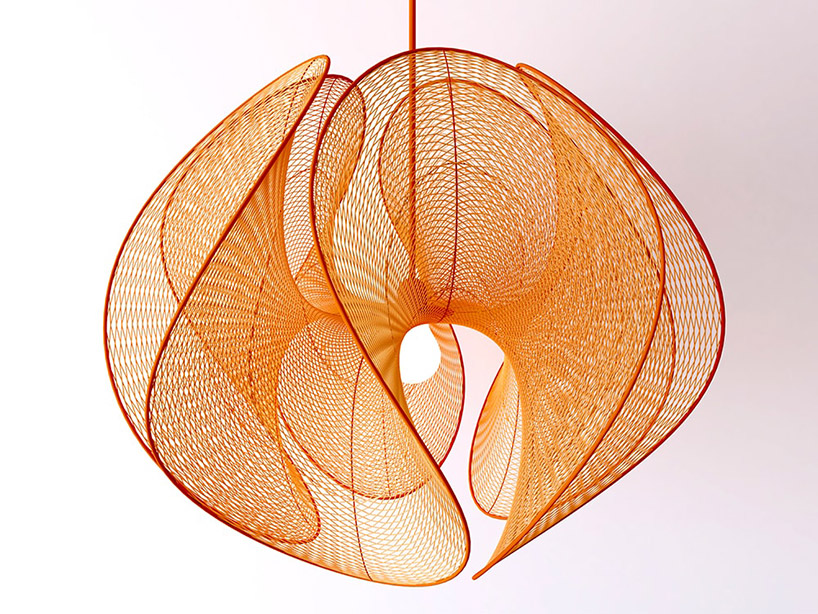
CO-RKs
designer: DIGITALAB (portugal)
mentor: lindsey adelman
a system connecting cork thread, a sustainable material and computational process that generates design products.
CO–RKs is more than just a shape or product, it is a generative system that connects a low-tech, sustainable material (cork thread) and computational scripts (generative design) to create a set of shapes (products) and spaces (atmospheres) with multiple functions and scales. cork thread is a unique and innovative product: non-fibrous, 100% natural and developed by mónica gonçalves for in.filo. the material has the natural color of cork and the way it looks is very similar to jute. this thread was created for application in the textile industry, particularly fashion. currently, this material can be produced with a thickness of up to 1 millimeter or more, while maintaining its resistance to abrasion and stress-related wear and tear. it’s a robust, comfortable material, resistant to light traction and it’s also washable, keeping all the original physical properties of cork. in addition to its aesthetic and technical properties, cork thread is sustainable and environmentally friendly.
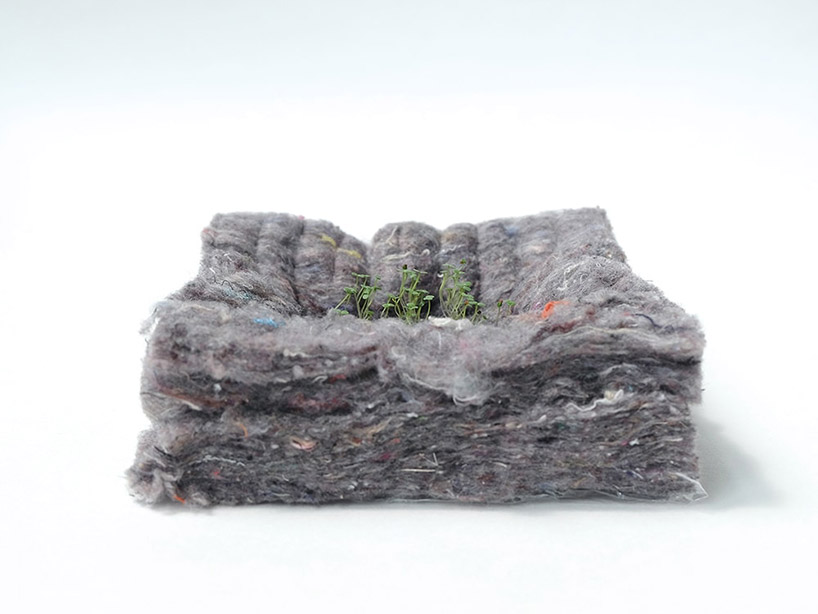
RECYCLED FIBER PLANTER
designer: eriko yokoi (japan)
mentor: sou fujimoto
CO-fusion textile and green design to repurpose used clothes.
in japan, approximately 1.5 tons of clothing products are thrown out annually and less than 15% is recycled. moreover, most of today’s clothing market consists of fast fashion driving production speed and quantity, but at the same time is the cause of major waste issues. recycling clothes is not a new practice and there are businesses today that tear old apparel and/or collect discarded fiber materials to reconstruct them into batten cotton material. the most common uses of the material is felt and interior cushioning of car seats, but there could be other uses.
this project came from the idea of creating a substitute for soil called fiber soil by recycling old clothes made from polyester fiber. the goal is to combine a material with low recycling potential with more recyclable materials to increase the chances of reuse. the colors of the fiber soil come from the sorting and mixing the colors of the old clothes collected. in order for plants to grow, the material was formed through compression so that it contains adequate moisture and air. layering different colors of the thin sheets of fiber soil’s recycled batten cotton material also creates more complex colors.
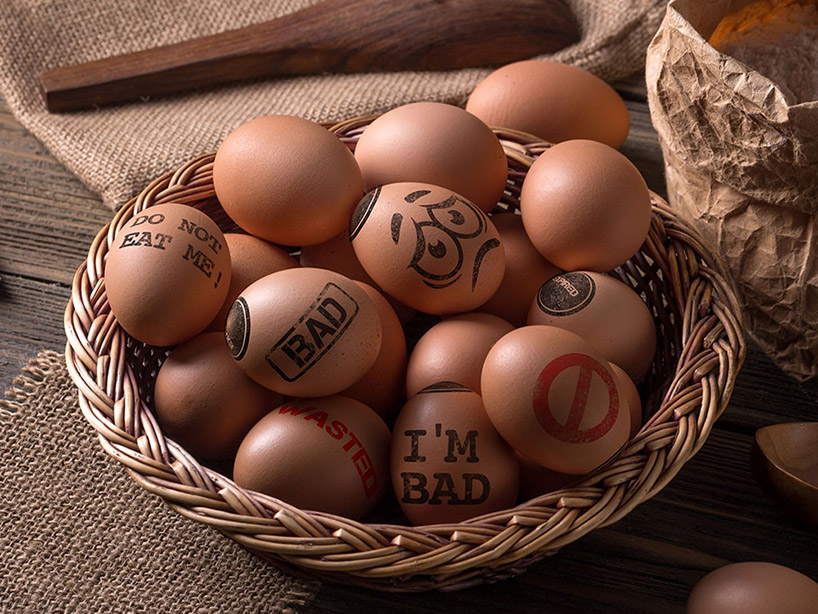
HONEST EGG
designer: aesthetid (malasya)
mentor: jessica walsh
connecting technology (intelligent ink pigment ) and design (indicator) to show egg’s edibility.
honest egg is an intuitive and simple indicator when an egg has reached its recommended consumption date. to overcome the problem of ambiguous dating or whether the egg is safe to consume, the user can observe a graphical image or word on the egg shell to determine the egg’s edibility. honest egg goes through a process of eggs being printed with an intelligent ink pigment that have the capability to change color in response to a pre-calibrated time period. if a cracked egg-shell or a sudden change in co2 levels or temperature is detected, the honest egg indicator can reduce the edibility date period significantly.

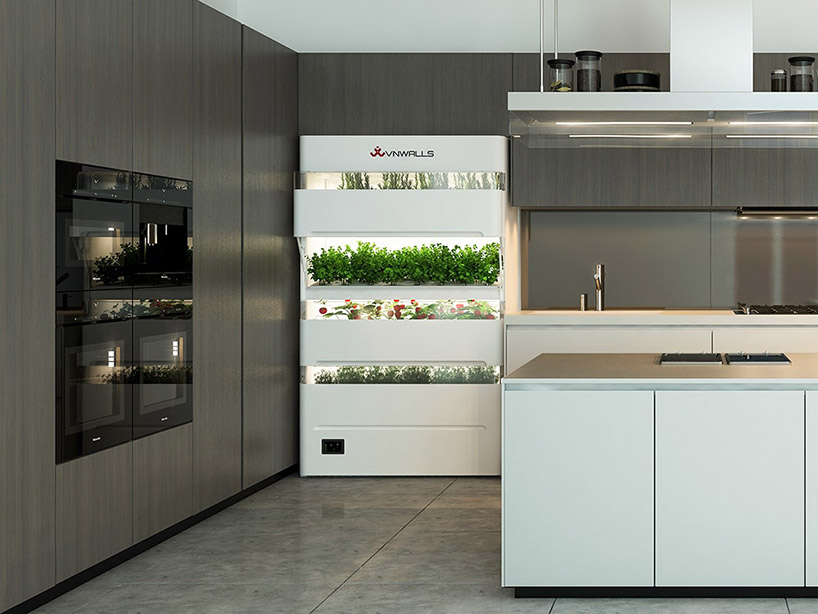
VNWALLS GARDEN
designer: VNWALLS (vietnam)
an aeroponic planting machine that contribute to the modern agriculture and farming methods.
VNWALLS GARDEN is an automated indoor machine that can grow most seedlings, vegetables, fruits, herbs and other small plants. providing additional adequate organic substrates into residential water, aeroponic is a modern farming method takes advantage in saving water and active control growing processes.
a carefully designed air filter removes dust particles and odors, contributes to the photosynthesis process, in which plants use energy from suitable led light, carbon dioxide and water to produce glucose and oxygen, and projects purified air outside. the user-friendly horticulture design also features lift door fitting which allows for space-saving accommodation, while the inclined trays, very low noise operation, and light weight are ideal for any space, including apartments, houses, stores, offices, restaurants, labs, etc.
the machine itself houses a set of 4 stacked trays, 180 naturally sponge pods equivalent to a 2.4 square meter garden. built-in uninterruptible power storage extends maximum operations up to 24 hours without main power. users can directly control vnwalls garden with the integrated operating system, or via smartphone application. other features include up-to-date status synchronized with a cloud-based server know-how to assists customers right on time. the machine guarantees the best growing conditions and contributes to industry 4.0 development trend.
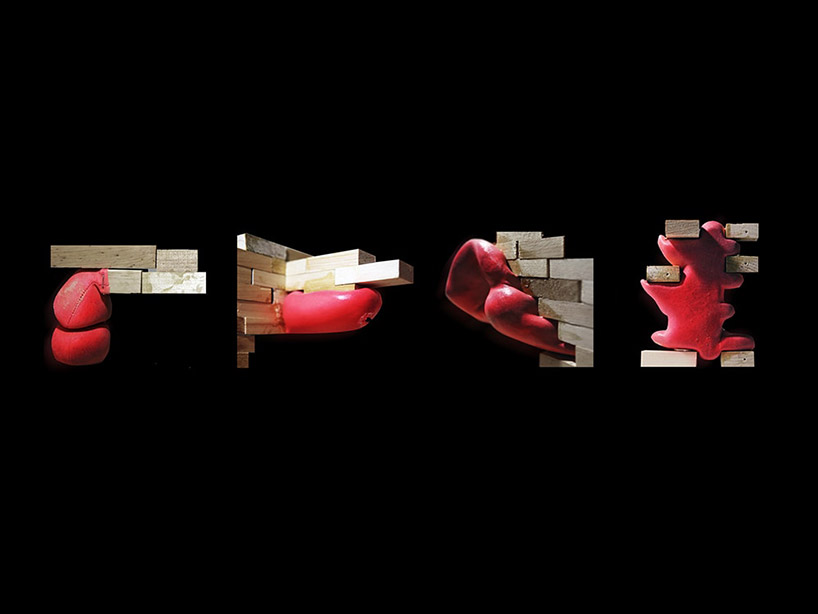
FABRIC WALL
designer: myung duk chung (south korea)
CO-merging softness and hardness a project that explores new ways to fabricate various objects.
fabric block is a malleable reusable fabric cloth which can be utilized in a variety of ways: a network system, toy, architectural structure, and more. prototypes employ new methods of fabric forms to explore the structural performance of catenary shapes found in thin shells.
the process of fabric block’s creation involves filling a suspended sewn fabric with earth and then its 3d shape is manipulated into a soft assembly form by wrapping it around a precast block. the soft form is then hardened by a solution and the earth is emptied out, leaving behind a semi-opaque, freestanding, super lightweight shell. fabric block can be adaptable depending on its materials and adjusting the hardness and softness with the hardening solution. future exploration can be done on how the fabric block be used in a performative manner or for industrial purposes.
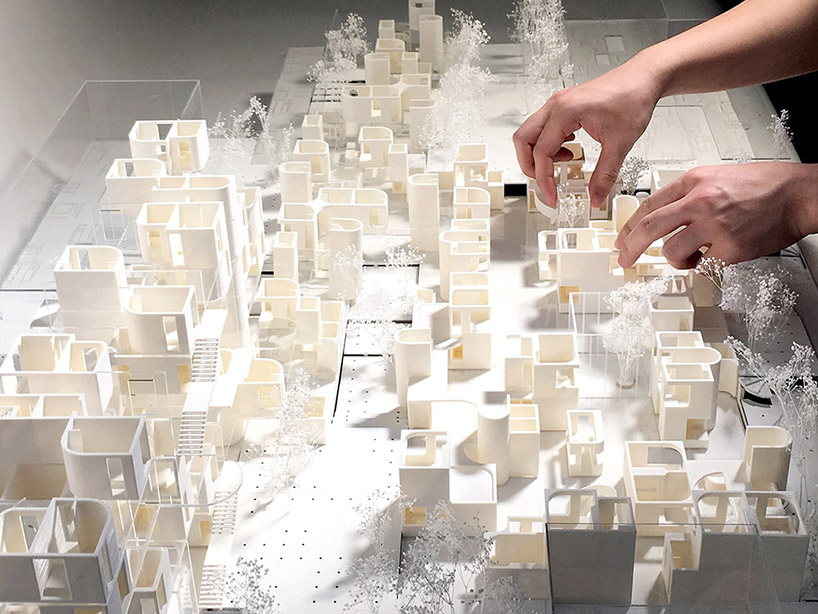
CO-LIVING
designer: khoa vu and wilson harkhono (vietnam and indonesia)
a new housing system that inspires people to CO-.
how to promote CO- in society? how to inspire interaction and collaboration? designers khoa vu and wilson harkhono believe it should start small – starting from the basics of life; starting from the way we live. this project is a proposal for a new housing system that can inspire people to interact and collaborate more. this project was done as part of a design studio in harvard graduate school of design in spring 2017.
by pushing the boundaries of what separate homes can share with one another, we start to merge spaces as a large part of a collective living space. this arrangement will inspire people to socialize and interact more. CO-living is a living situation where the distinction between solitary homes is blurred, promoting flows and collaboration. this basic idea is later carried out in several other scales – into cluster and urban scales. by transforming a typical cluster of housing into series of interweaving strips, we propose an indistinguishable living condition between public-private, inside-outside, and part-whole – producing a completely new way of living and interaction between people. this is a housing system that will encourage the idea of CO-, as the ultimate goal of lexus design award 2018.
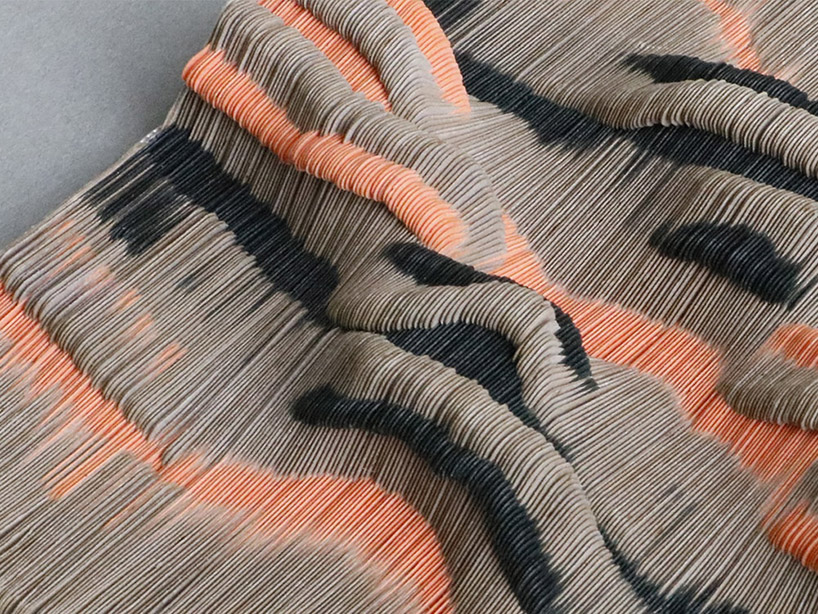
PAPER SKIN
designer: hiroki furukawa (japan)
connecting layers of paper to create a new material rich in color.
PAPER SKIN is a new structure using the very edge of paper as a surface. while being ‘just paper’, the structure acts and feels like the skin of a living being. the thin edge of one sheet of paper hardly registers in our consciousness, but even one piece has a thickness that carries color. this thickness increases by stacking several sheets of paper, and manifests as a color surface.
a thin piece of paper with a string threaded through tears easily, but arranging the paper with several layers and using precision laser cutting for string hole placement creates a strong uniform material. PAPER SKIN’s smooth undulating surface movement of the structure is from the perfect balance of size and thickness – small enough for fluid movement, but strong enough to resist tearing.
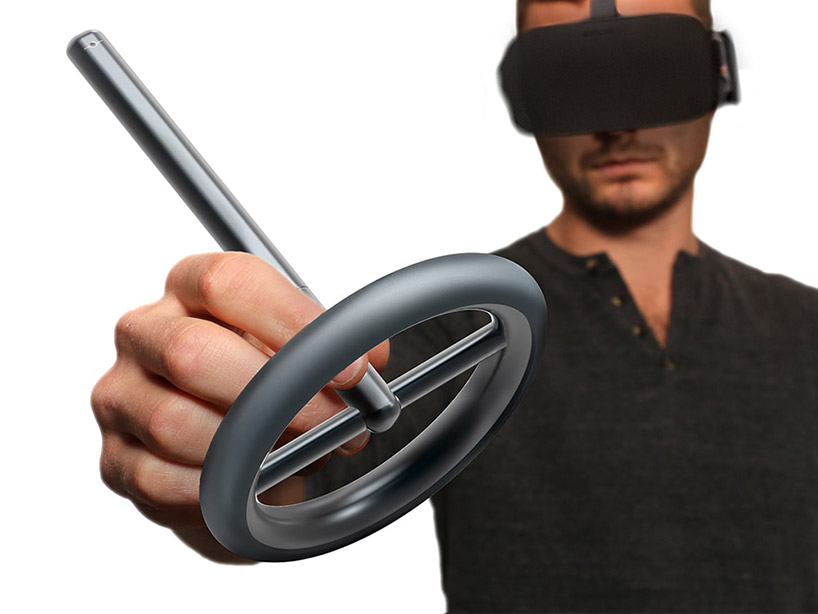
GRAVITY PEN
designer: jon simmons (USA)
a tool connecting virtual reality to physical experience, by simulating weight and touch.
in an increasingly reliant digital world, and many are frustrated with the need to focus in on two-dimensional screens. virtual reality can provide more lifelike, immersive experiences, but it still lacks a staple of the physical world – weight. the gravity pen connects the intuitive, tactile world with the limitless possibilities of the digital world.
with gravity pen, internal weights move to shift the center of gravity of the device, which creates convincing simulations for picking up objects, turning a screwdriver, carving and sculpting forms, and much more. if used for computer aided design, it can reduce reliance on environmentally harmful prototyping materials, and help create products more grounded in reality. designers often need precise dexterity, so it can be held like a pen. for activities like gaming, requiring a wide range of motion, buttons and a joystick, a handle can be attached.
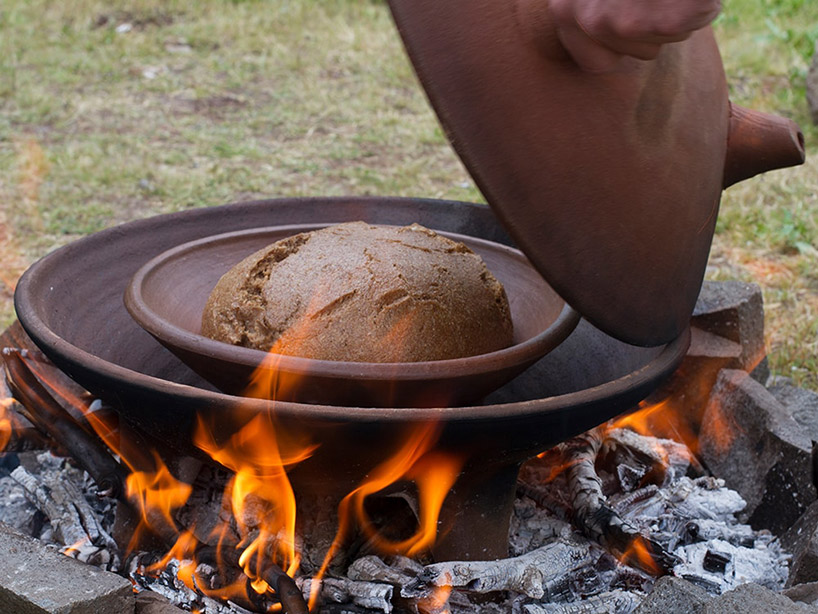
COmer
designer: sistema simple studio (chile and mexico)
set of clay containers that collaboratively accompany the process of cooking, eating and sharing bread.
seeking to connect the present with the past and the essential with the conventional, sistine simple studio designed an intangible experience built on one verb and two nouns: sharing, through bread and soil, creating a bridge where nature’s basic elements coexist: earth, water, air, fire and men.
this collective vision represents the concept behind ‘COmer’, a series of containers that trace and rescue the origins of eating, sharing and cooking. the studio designed three pots which accompany the bread-making process, made with clay from pomaire: a rural town in chile’s central valley that treasures an ancient pottery tradition. the biggest pot is used to mix and knead the flower and water, while the smallest one is where the dough reacts by leavening. then, by integrating the middle-sized container, all pots are combined to form an oven, where the bread is cooked over fire.
bread and soil coexist in nature and society through the energy of our hands. ‘COmer’ designs an experience around bread-sharing, rescuing past and present values materialized through clay containers. each with a unique function and a correlating one vis-á-vis the whole. prefixed by co, ‘COmer’ means “to eat” in spanish; the CO reminds us to always do it together.
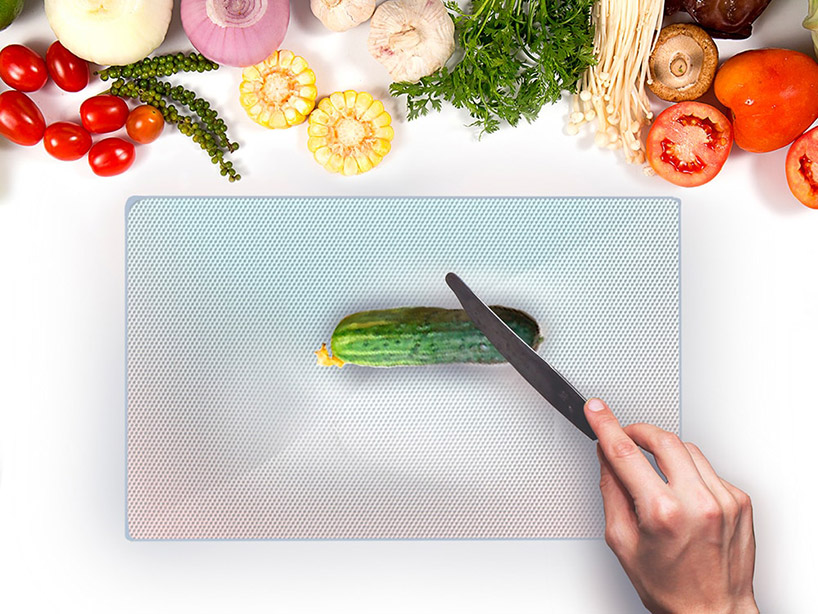
GRABBY
designer: I DEAL (russia)
a CO-adapting cutting board for people with special needs.
grabby is a special kitchen cutting board intended for people with special needs: those who cannot use their second hand and/or experience difficulties when cutting food. the board’s technology consists of a soft pillow covered with a kevlar fabric and an embedded vacuum pump. the pillow is filled with coffee grounds, which grabs and holds the item on the board thanks to the vacuum pump. it is possible to do things on this board with one hand, such as cutting vegetables and opening a jar. the silicone base of this board will prevent it from sliding on kitchen surfaces. the innovative approach to an ordinary thing will simplify the process of cooking particularly for people who suffered a stroke.
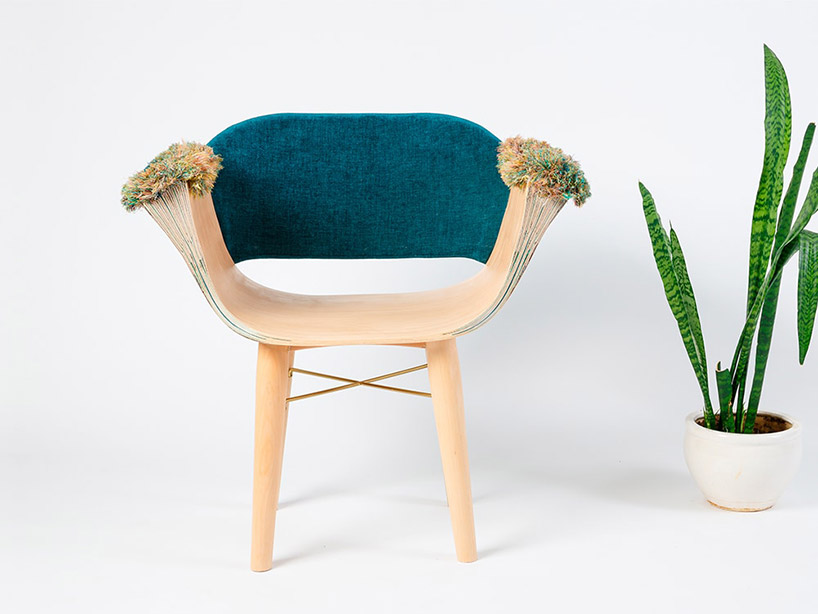
PRIMAVERA
designer: yael reboh (israel)
to COalesce veneer and fabric laminated creates an unique armchair that stimulates imagination.
primavera is a graduation project at the holon institute of technology. the “primavera” armchair was initiated as a research project examining materials layering and their combination. the research studied the relationships between materials of different properties combined together into a new complete material/object. yael reboh sought o find out how each material keeps its unique identity while changing according to the material it interacts with, and by that creates a new object that appears and performs in a different way.
the new layered combination created a new design method allowing the thinking of the assembling of object components. the designer was fascinated by the aesthetic that the layered combination created, the versatile expressions achieved from each material like soft vs. hard, cracking vs. incomplete, flexible vs. stable.
the armchair is made of lamination, combining layers of veneer and fabric. the lamination center begins with a wooden seat. from the firm wooden seat, the fabric is slowly combined ending with soft colorful tassels. ending with the tassels, the arms create a new sensory experience. the backrest highlights the contrasts between the materials by the sharp connection. the combination of material creates together an interesting, vibrant and an avant-garde object. the name “primavera” expresses the blooming of the colorful fabric between the wood layers.
